Regular followers of this blog will notice this post concerns something very different from the usual landscape and wild life themes….indoor event photography. Our church, Calvary Baptist Church, in Oshawa Ontario, has a large worship and media arts department that as part of their ministry produces and performs a major musical/theatrical presentation every Easter and Christmas. This past weekend we officially kicked off the Christmas season with the powerful and moving musical “Under A Starry Sky”. The presentation was performed four times over the weekend with more than 4,000 people attending. I had the privilege of photographing one of the presentations and thought a blog post regarding the challenges of event photography would be of interest.
Theatrical event photography requires careful planning as unlike a sporting event, the audience remains seated and quiet and generally don’t welcome a photographer moving throughout the venue during the performance. The photographer must balance the responsibility of recording the event with excellence while remaining respectful of the audience and performers. This is a time when stealthiness is a good thing, not unlike wildlife photography! Gear planning is also important and given the challenges of very low light interspersed with bright spots and floods the fastest lenses possible must be used. For shooting Under a Starry Night, I primarily used a 5D Mk III with a 16-35/2.8 lens and a 1Dx with a 70-200/2.8 lens. This combination covered a good focal range and didn’t require lens changing although I did use Canon’s new 100-400 L IS II for a few images. Finally I used a Fuji X-E2 with an 8mm fisheye lens for some interesting ultra wide angle images.
The fisheye allows one to capture the entire venue in one photograph, however these images must have strong foreground representation to be effective. In this case the audio-visual control centre provides exactly that (X-E2, 8mm).
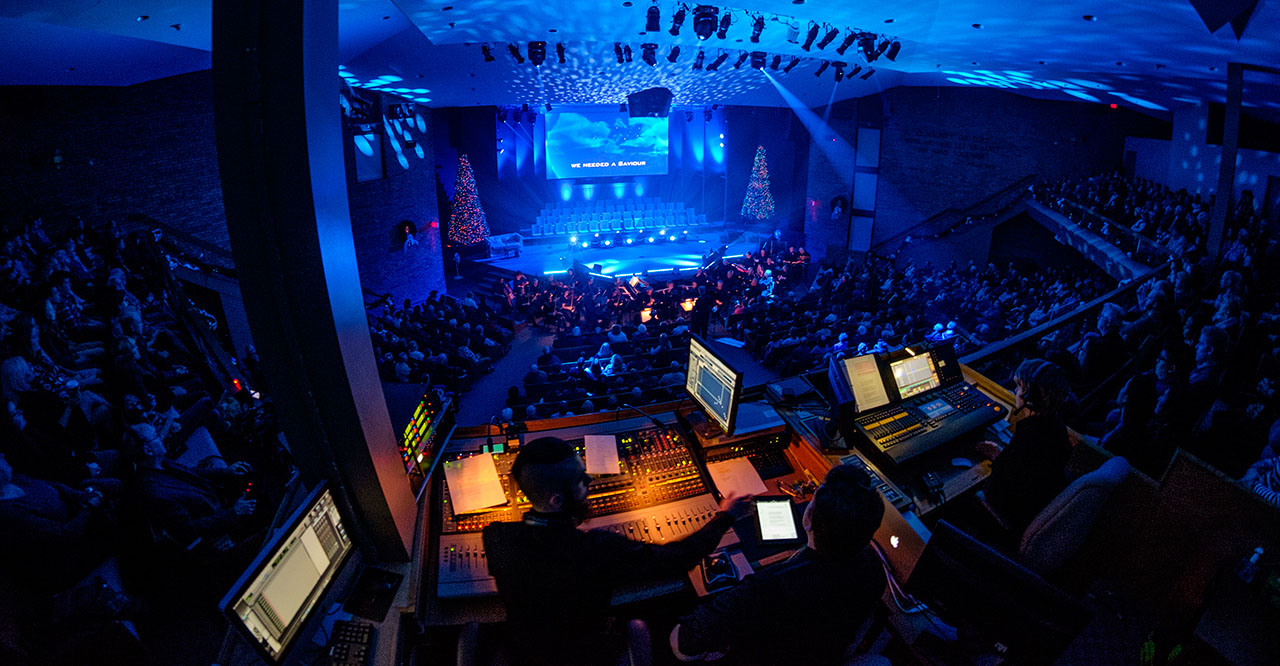
Don’t forget to get a pic of the audience, which also provides a good record of the venue as well (5D, 16-35).
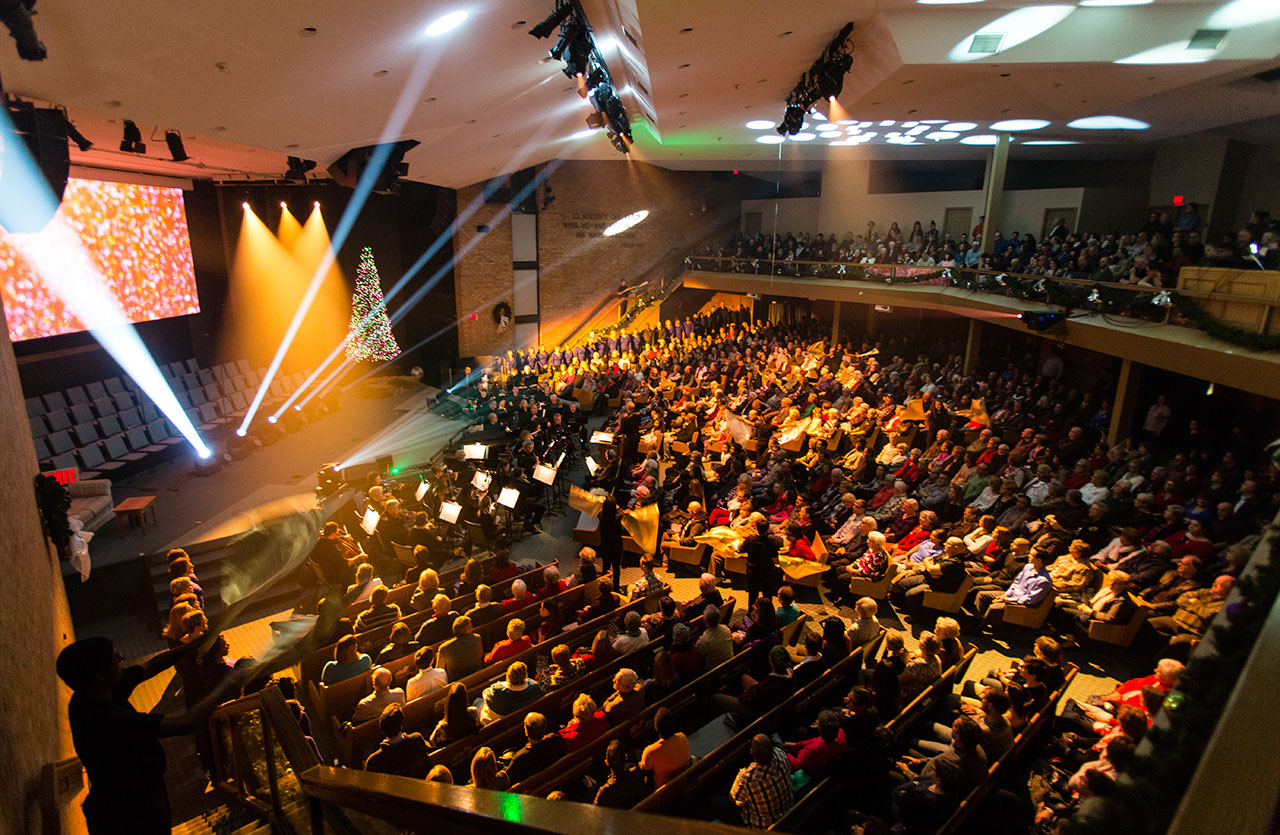
The music for the Christmas presentation was performed by an orchestra comprised of members of the church as well as guest musicians from the Oshawa Symphony. It hard to do the musicians justice with the camera but its important to show their invaluable contribution to the performance (1Dx, 70-200).
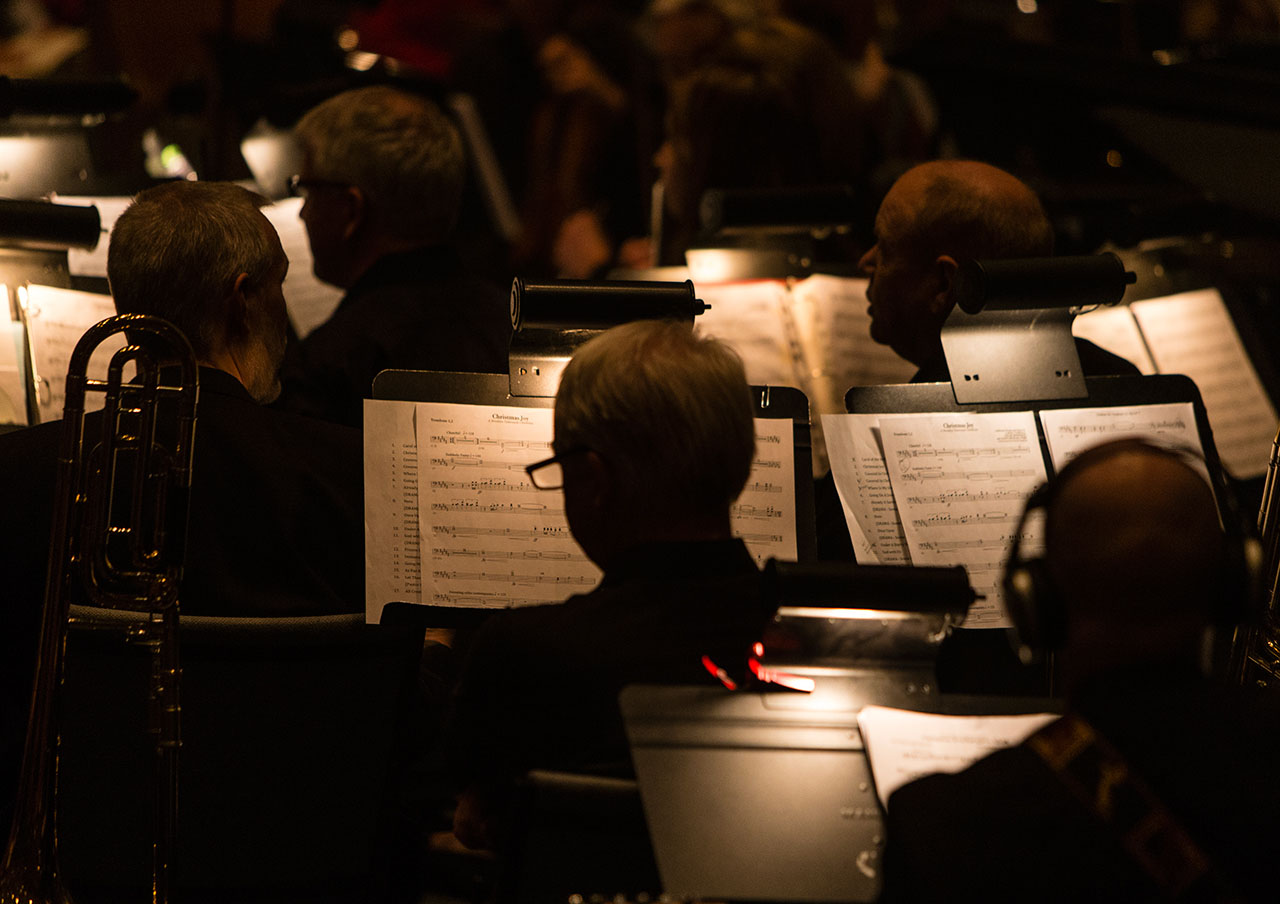
The technical challenges photographing this type of event revolve around the very difficult lighting inherent to them. The venue is typically dark while the actors and musicians are lit with spotlights that are of varying intensity, colours and temperatures creating extreme ranges of contrast and fluctuating white balance as can be seen in this image.
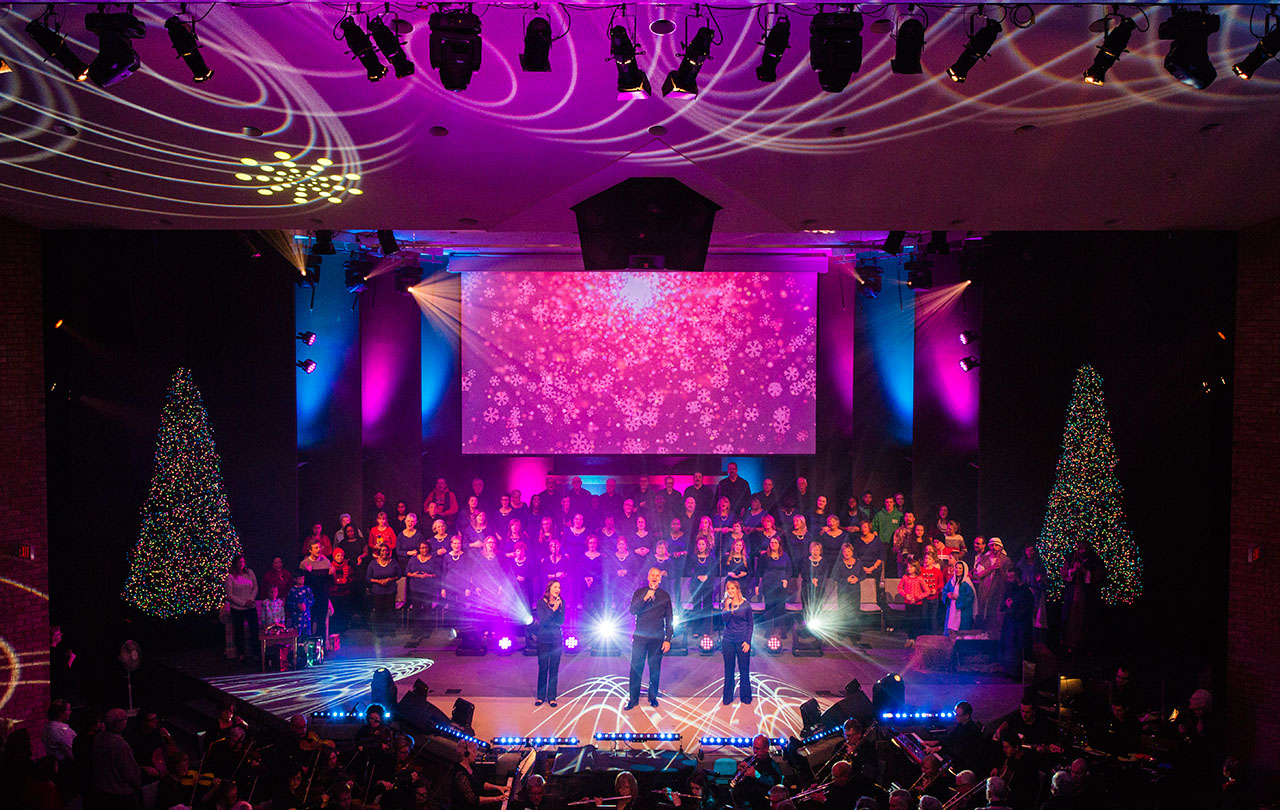
The tendency with event photography is to overexpose the performer’s faces which makes the resultant photograph unacceptable. This is certainly the case most of the time when using a camera on automatic settings, whether it be with your iPhone, point and shoot or expensive DSLR. The problem is caused by the mixed lighting confusing the camera’s light meter so the camera chooses an exposure that overexposes the faces of the performers. In order to prevent overexposing people’s faces, or ‘blowing out the highlights’ you need to shoot manually and underexpose every image by two to three stops. It’s a good habit to watch the histogram on your camera and turn on the highlight alert feature to quickly see if you are overexposing the faces. This next image was taken three stops underexposed from the meter reading.
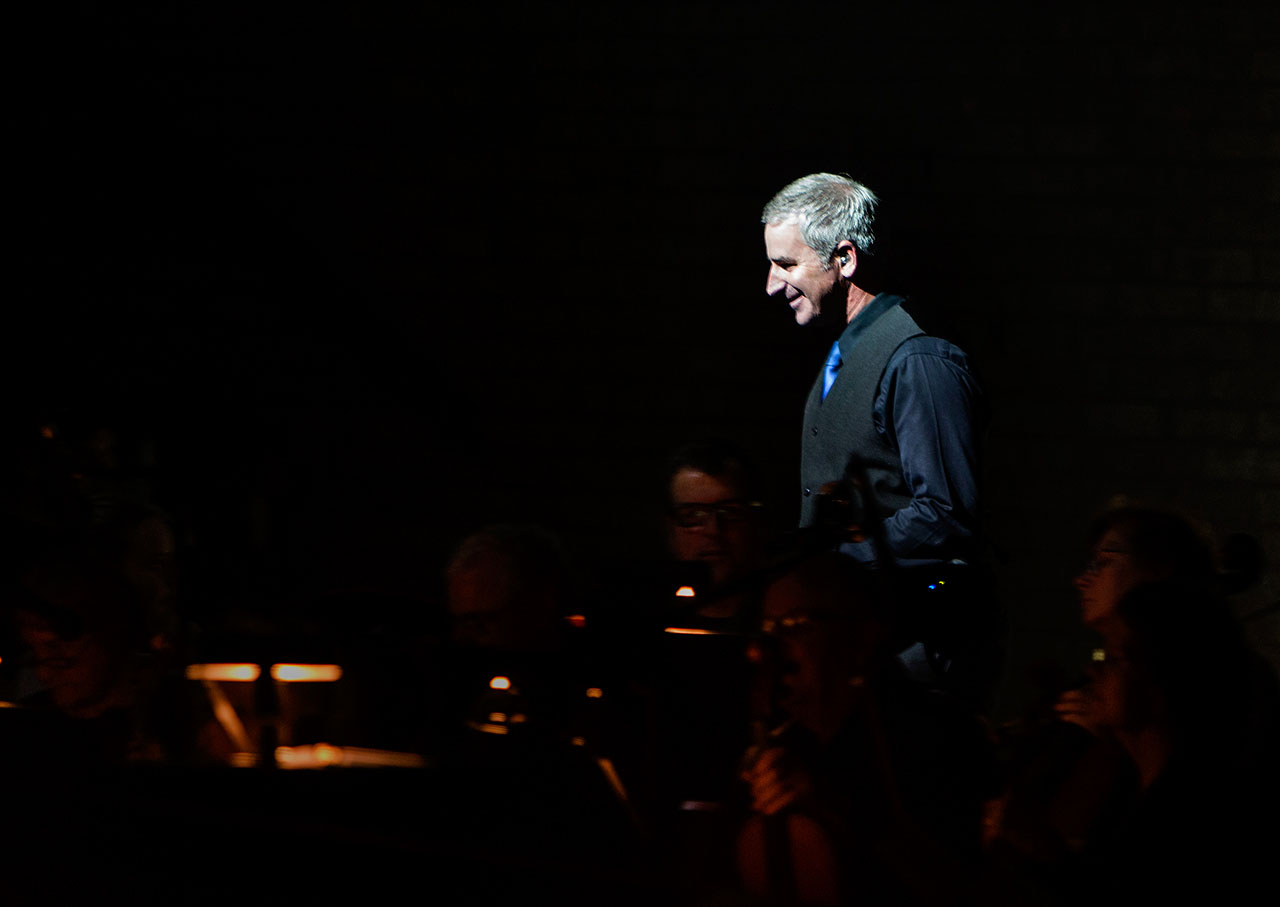
The lack of ambient light in concert venues necessitates taking all measures available to shoot at shutter speeds fast enough to stop the motion of the people in the frame and prevent movement of the camera during the exposure. We don’t have time in this post to discuss these in detail, however they involve; using the widest possible aperture allowing the most light possible into the lens (f/2.8 for most the images in this post); using high ISO’s which make the camera sensor more sensitive to light (ISO’s ranging from 2000-4000 in this case); and shutter speeds close to 1/focal length which is the rule of thumb for the minimum shutter speed to prevent hand held camera shake during the exposure (this problem can also be minimized by using lenses with image stabilization or vibration reduction). Even still, if the subjects in the image are moving, they will be blurry at slow shutter speeds which is never acceptable, so you must also have a shutter speed fast enough to stop the action. From experience, shooting a concert type event like Under A Starry Sky requires a minimum shutter speed of ~1/80 second. A good outcome with slower shutter speeds is a result more of good fortune rather than good technique! So always get to an exposure that keeps things sharply in focus and be prepared to deal with the shallow depth of field created by the wide apertures and the increased noise created by the high ISO’s.
Having said all that, the improved technology with today’s high end cameras allow the taking of acceptable shots at extremely high ISO’s. This provides the luxury of obtaining shots in low light without the use of a flash in places that were not possible even two or three years ago. This next image was illuminated with only the podium light reflecting off the director’s score. It was taken at ISO 12,800, 1/60 sec, f/2.8 and 200mm!
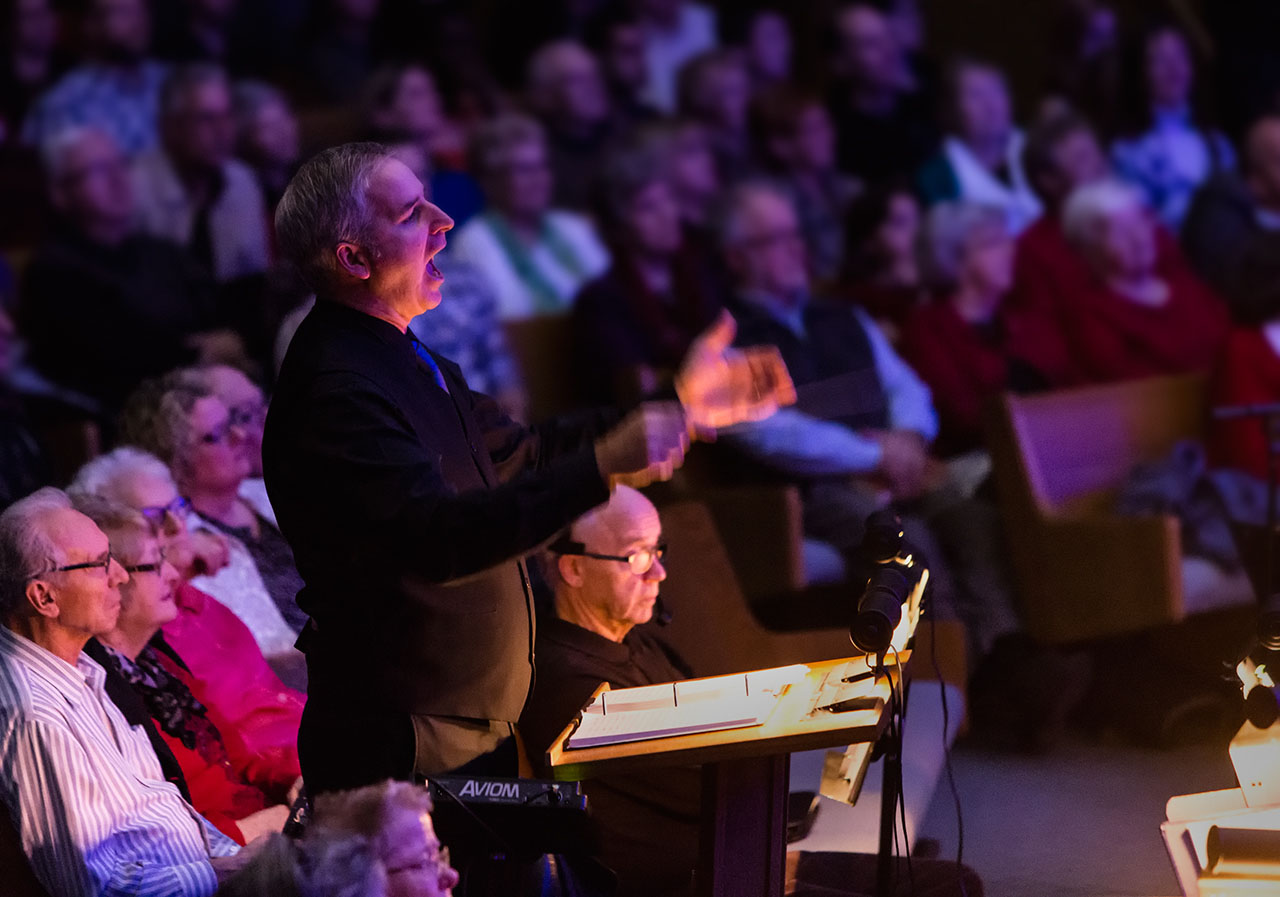
The last technical issue to mention is white balance, which is something that every photographer and videographer deals with all the time. We could write pages on the complexities of white balance, but that will be left for another post. In a nutshell, it is important to set the camera white balance correctly so that what appears white to your eye when you took the photo also appears white in the resulting image or video. If the white balance is not set correctly an annoying colour cast becomes visible in the image. This is most evident by the skin tones appearing ‘off’ in the image. All light sources have an inherent frequency and temperature, both of which affect the colour of the light in the visible spectrum. The camera sensor must determine what that temperature is in order to calculate what white balance is required to accurately render the colours. This is very easy for the camera to figure out when there is only one light source, like the sunshine, however it is virtually impossible for the camera to calculate the white balance when the scene is lit by many different light sources and many different types of lights among those sources. Such is the case with a concert which utilizes literally hundreds of different lights, of different styles (temperatures) and different colours to create the dramatic effects necessary for an excellent performance. So what is the photographer’s solution? What I do is always shoot complicated lighting events in RAW format (a true digital negative that records all of the digital information captured on the sensor at the time of the exposure) and then adjust each image when processing the images on the computer. This takes a lot of time but helps tremendously in creating an image that best represents what your eye was seeing at the time of the exposure. Even still, as you look at the images in this post and in the gallery with all of the images, you will notice that skin colours are not consistent throughout. When you see a picture or video in which the colours just don’t look right or appear natural, it is almost always because the white balance was not set correctly, or the light sources were so mixed that it was impossible to set the correct white balance.
So enough of the technical discussion, lets look at some of the images from Calvary’s presentation of Under A Starry Sky.
Under a Starry Sky is a powerful seven scene musical that follows the spiritual journey of Melody, a young wife and mother who questions God’s presence as her family faces a bleak Christmas due to the loss of her husband Travis’ job just before Christmas. In this title slide we see Melody and Travis along with the Sounds Of Praise choir and the Calvary orchestra.
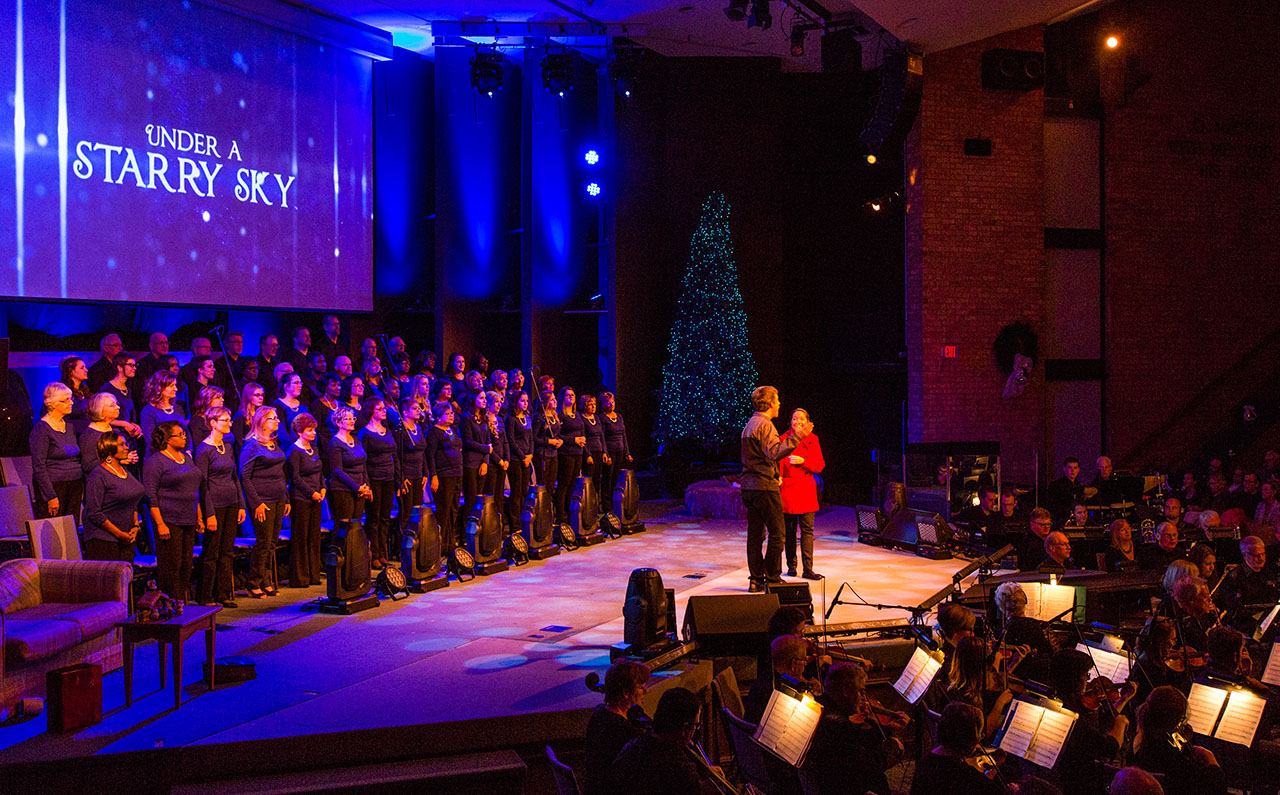
Melody
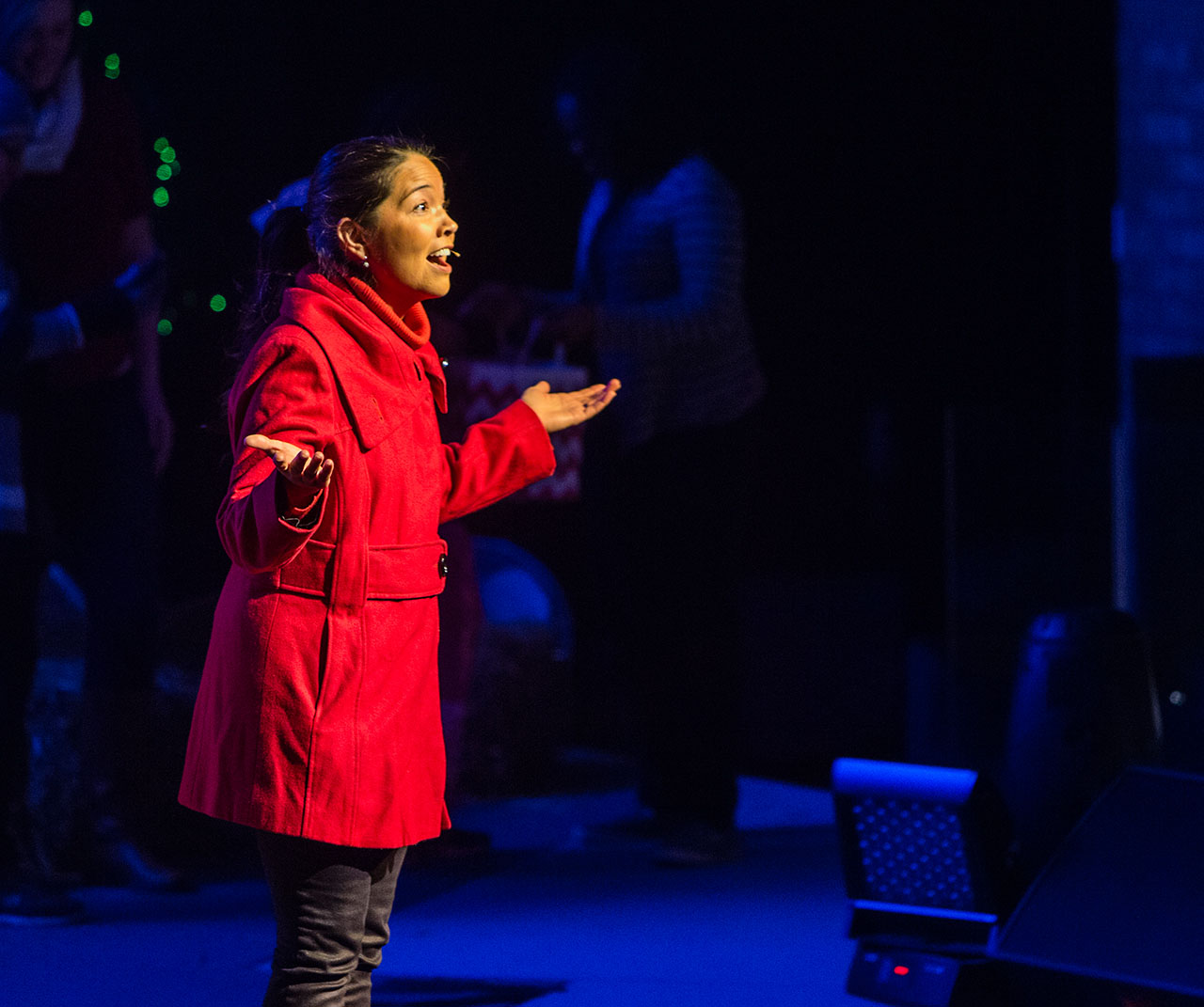
Travis
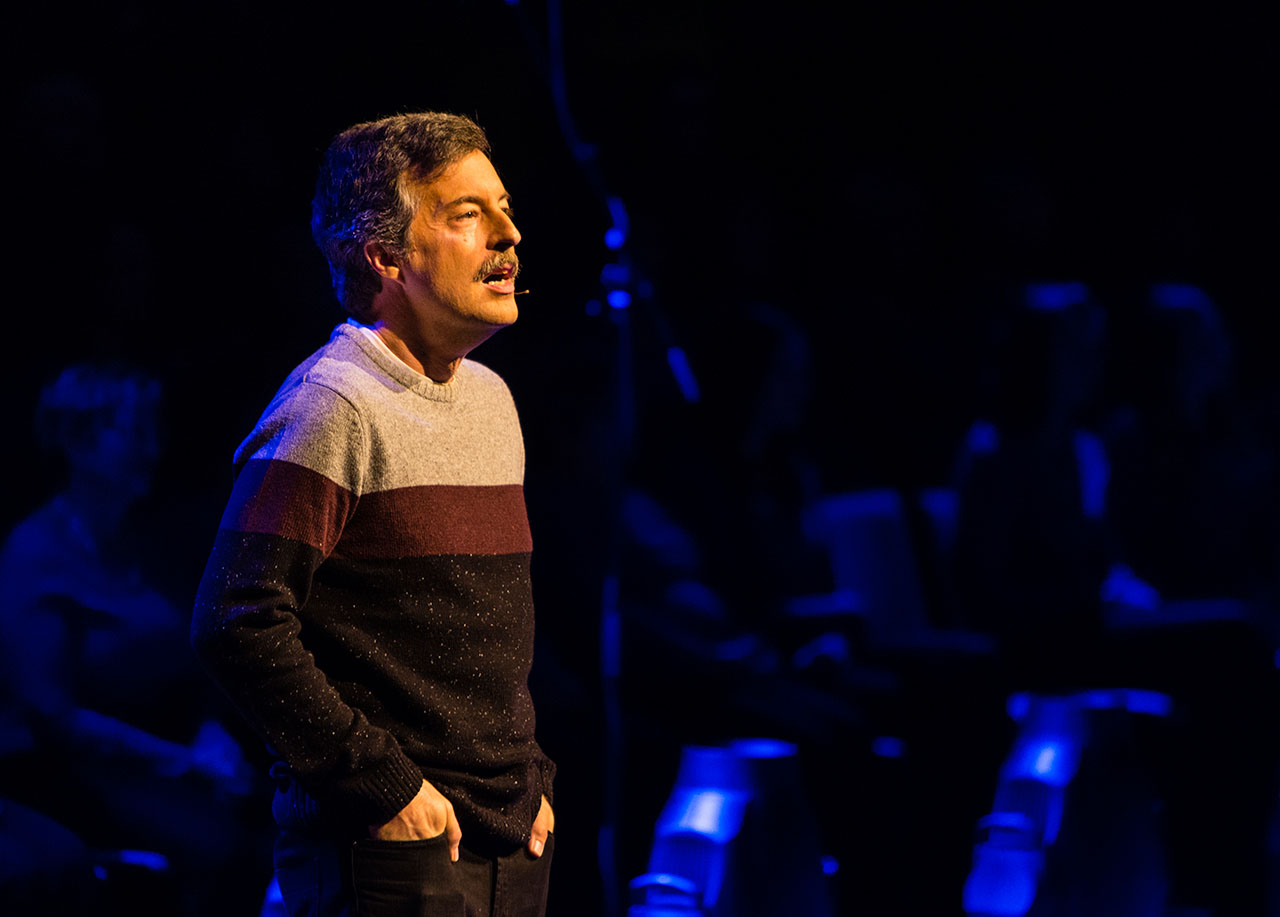
Throughout the musical many soloists, duets and ensembles were featured.
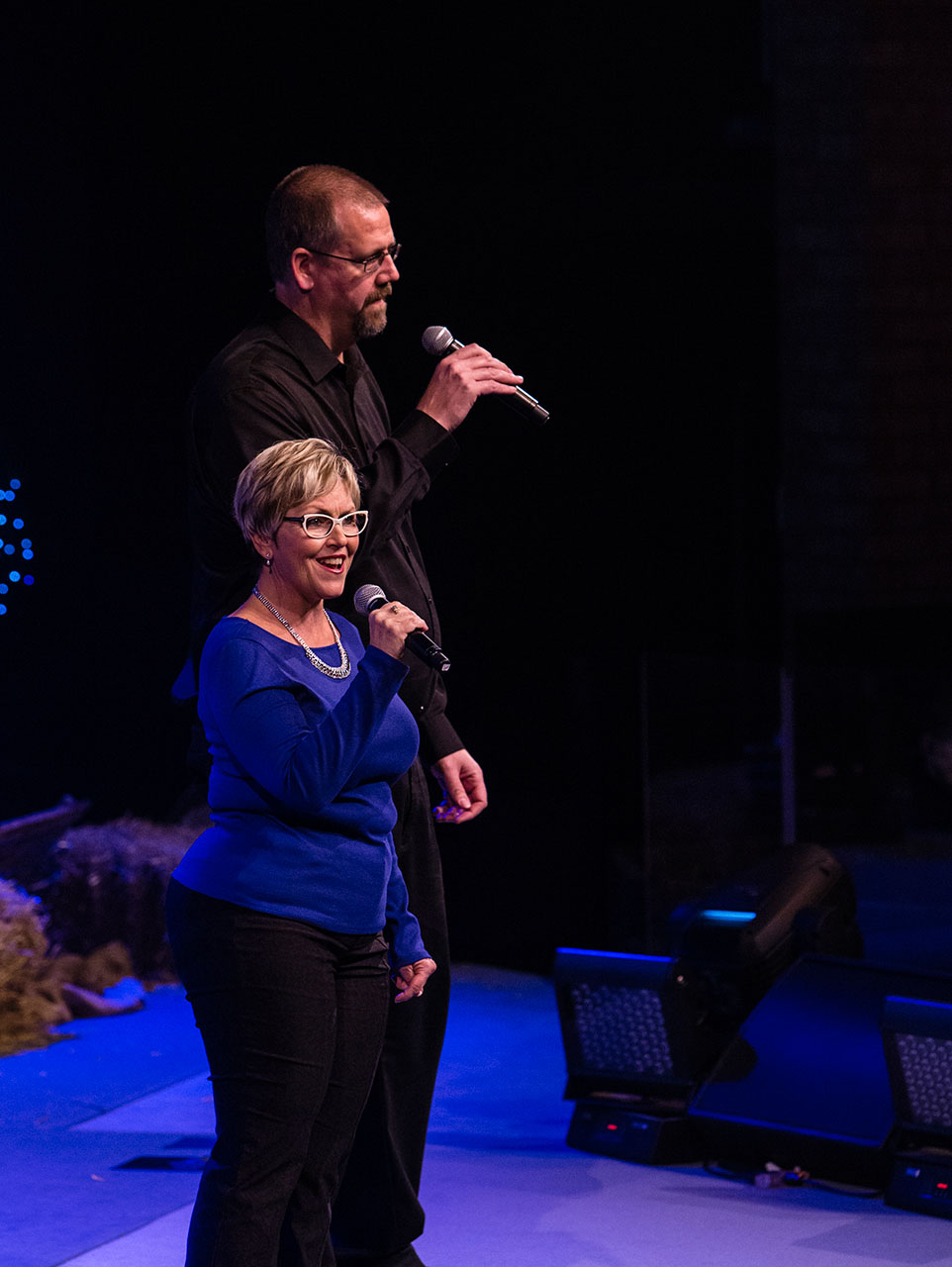
.
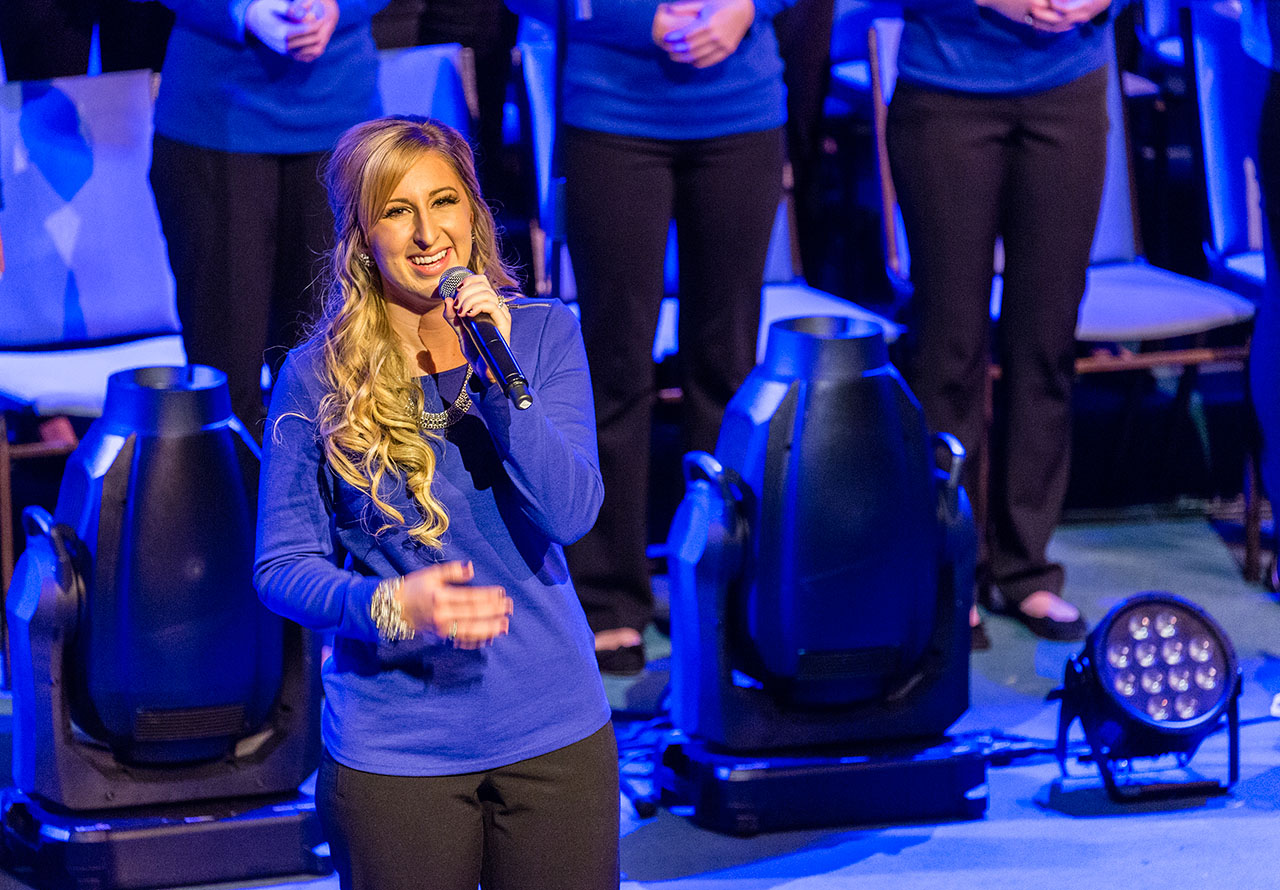
.
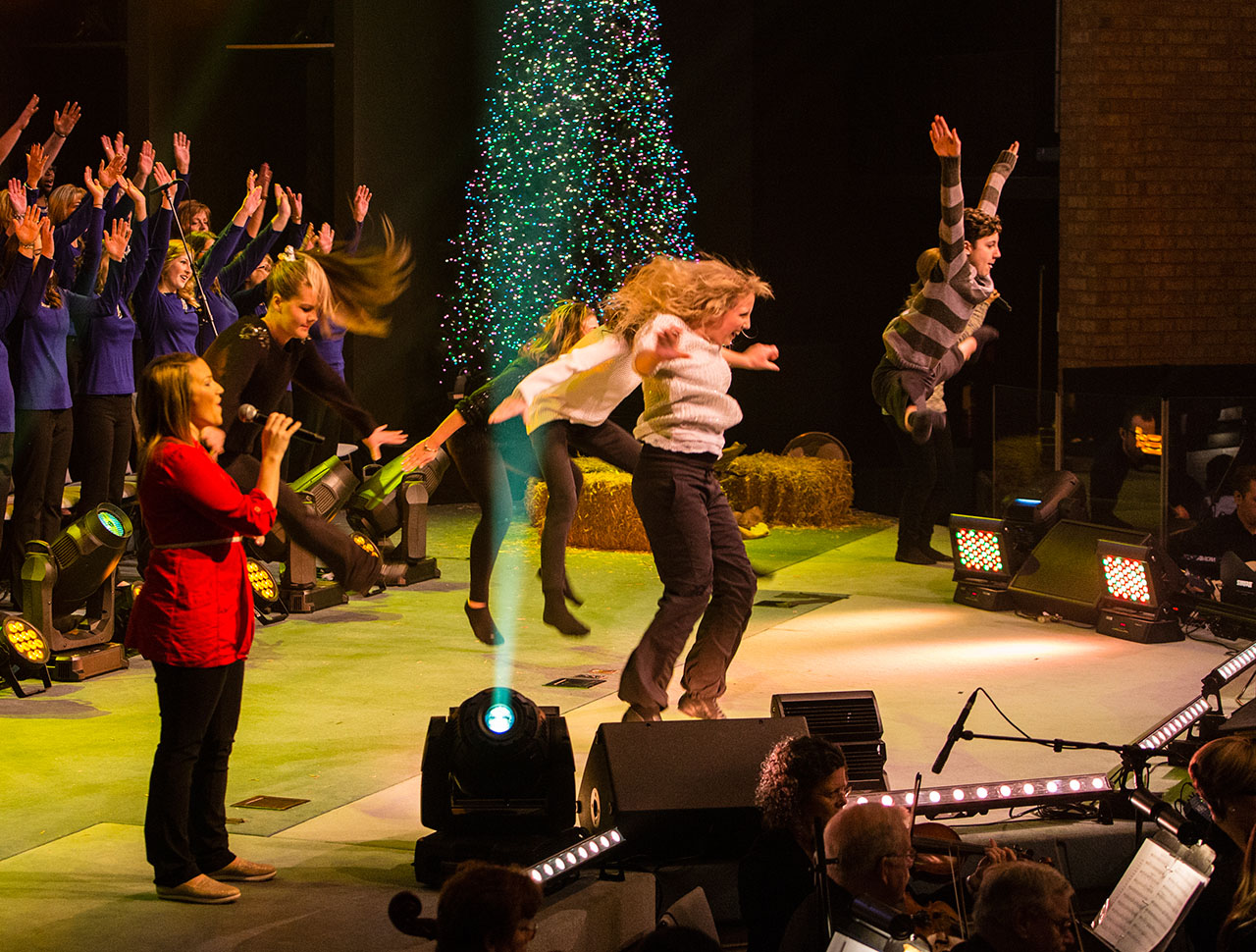
Travis, Josiah and Evie.
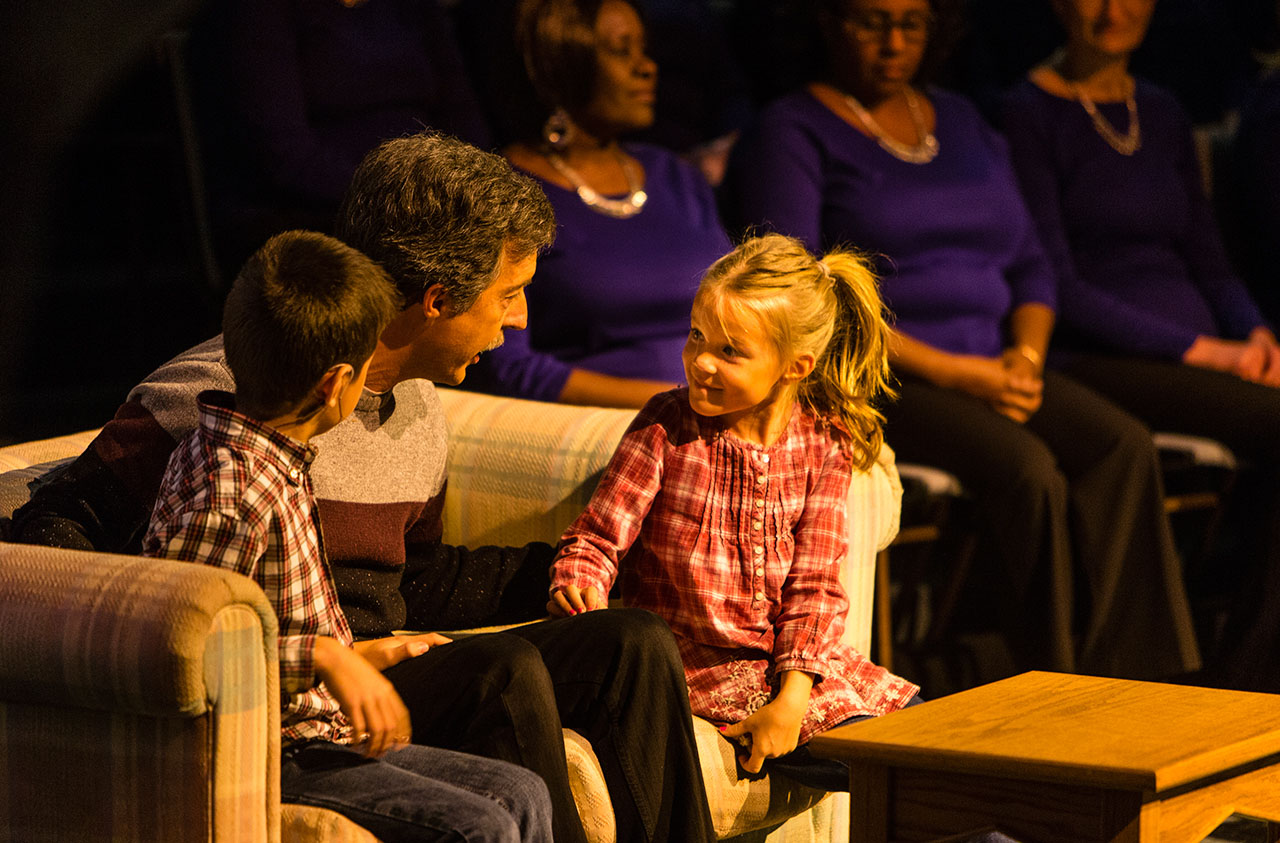
Travis & Melody’s daughter Evie, praying for her mom….that she would know she was loved, by them and God. This is my favourite image from the musical.
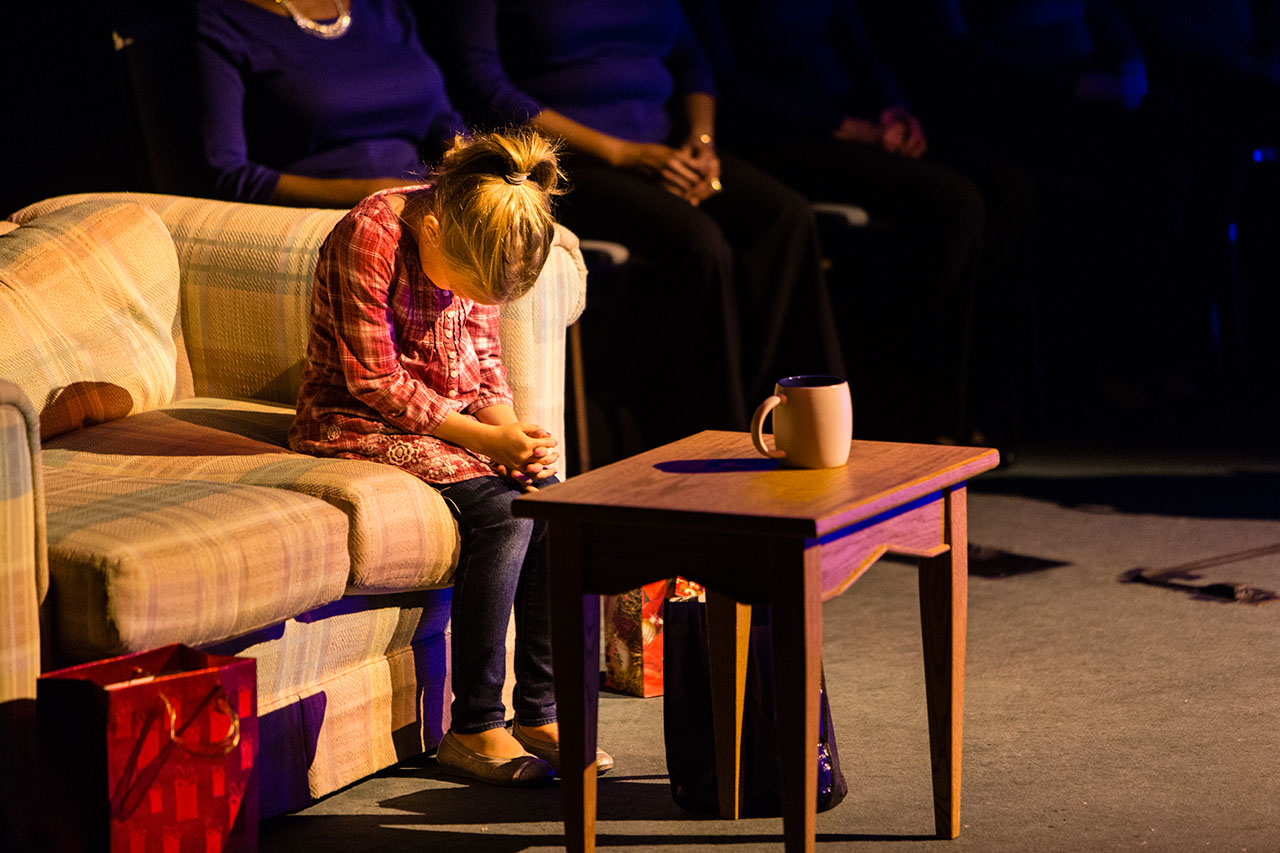
Melody is transported back in time to that first Christmas when Jesus was born. Here she meets Anna, Mary’s mother.
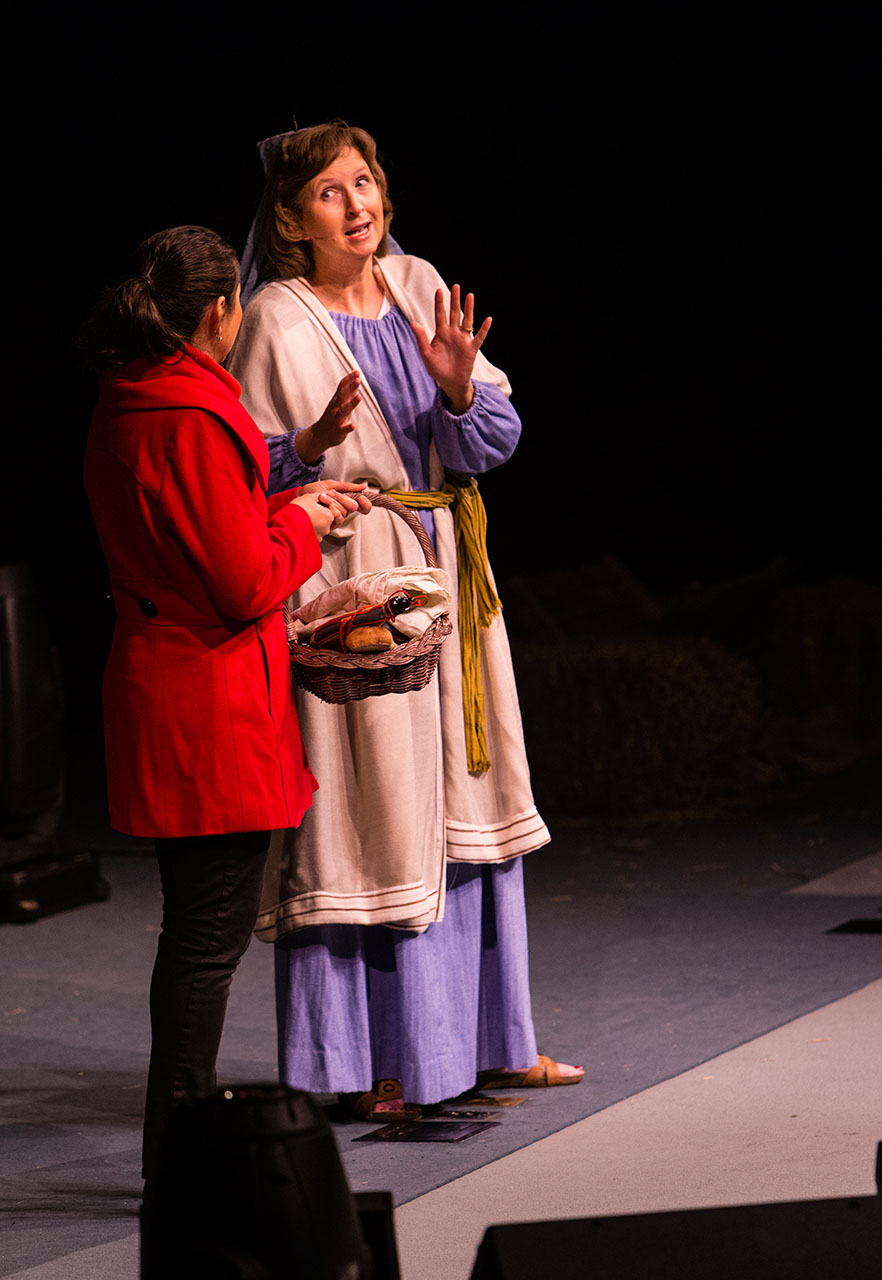
Mary and Joseph making their way to Bethlehem and the stable where Christ would be born.
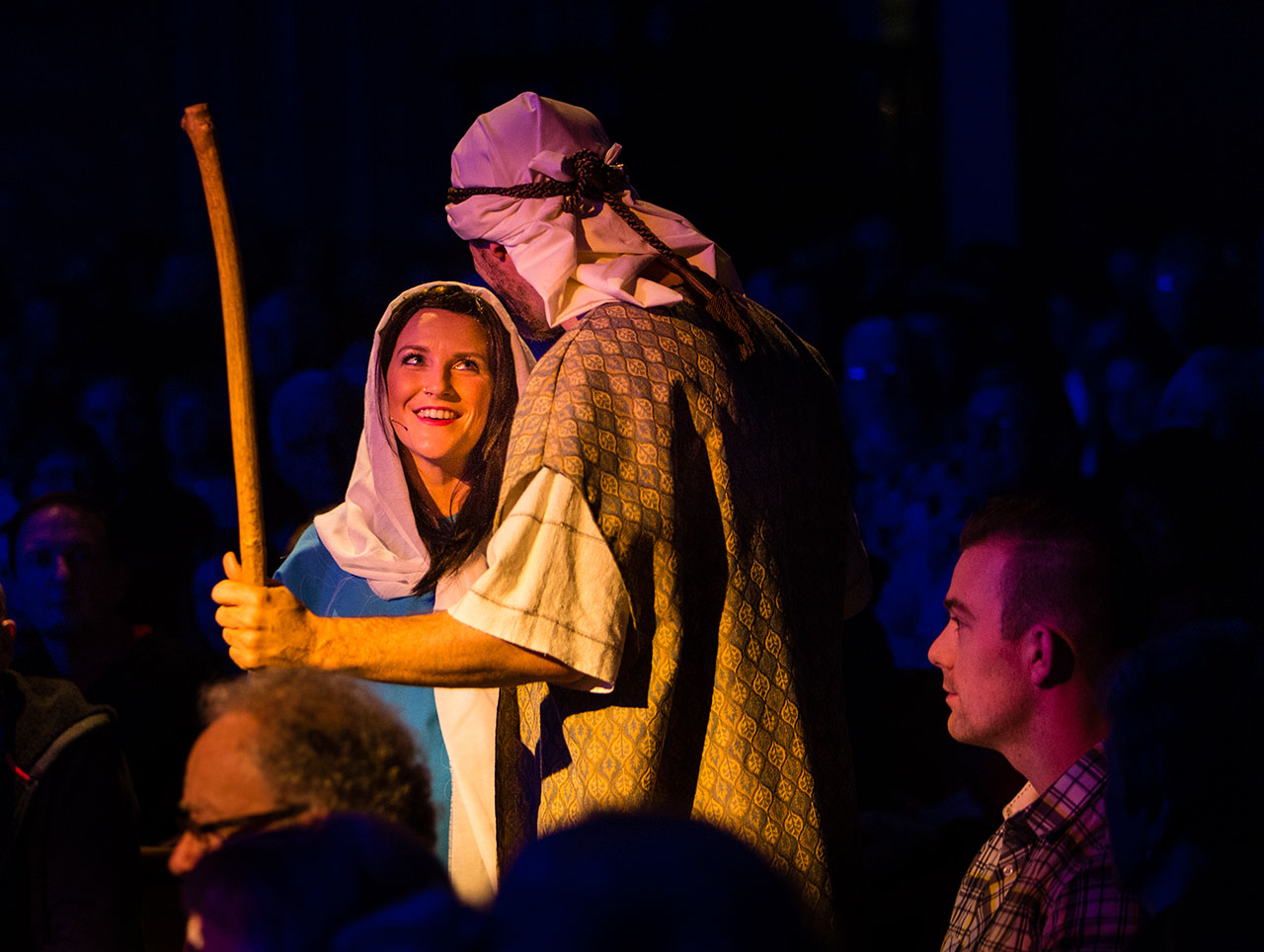
Melody meets an angel, Cleo, who was tasked with announcing the baby’s birth to the shepherds.
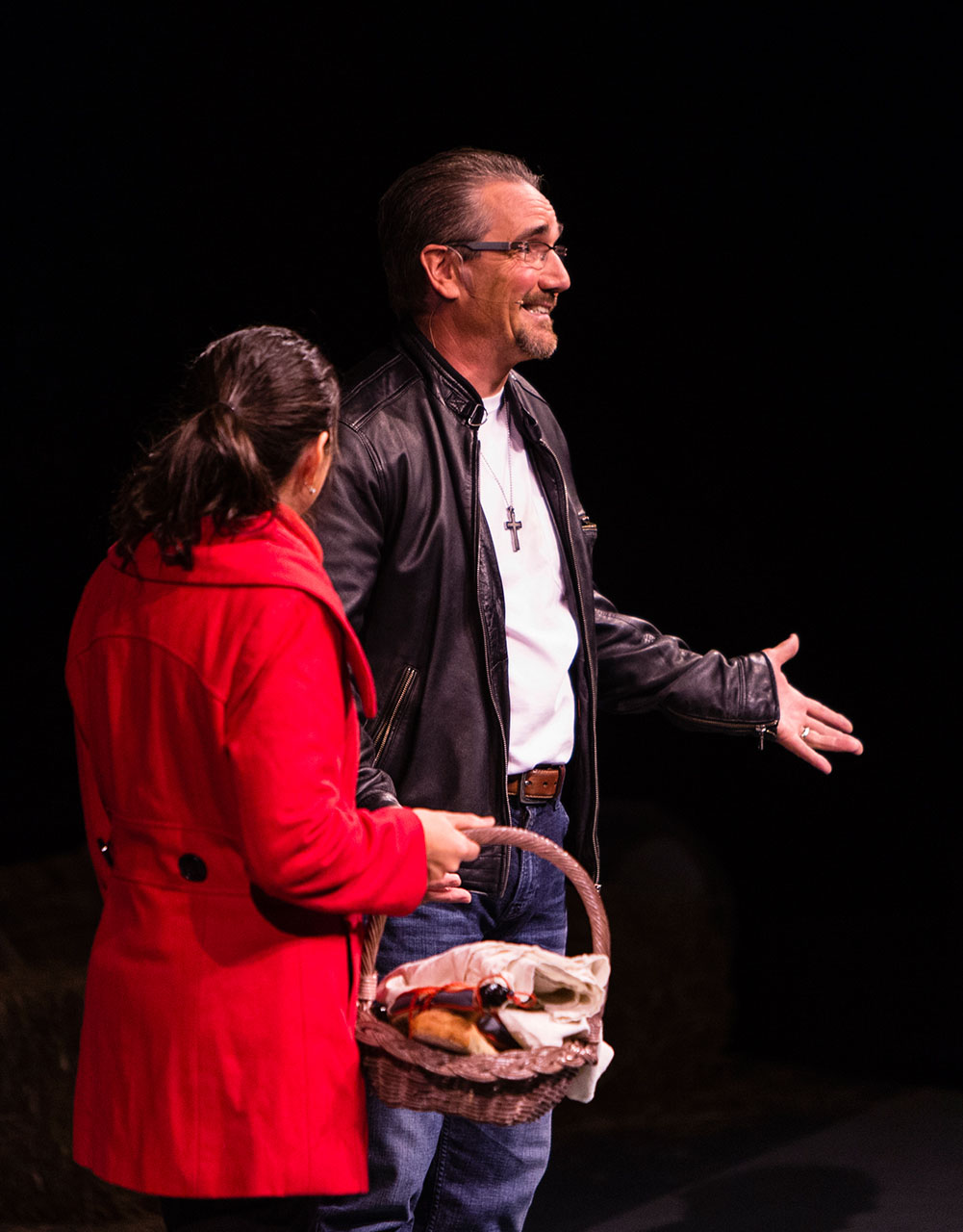
.
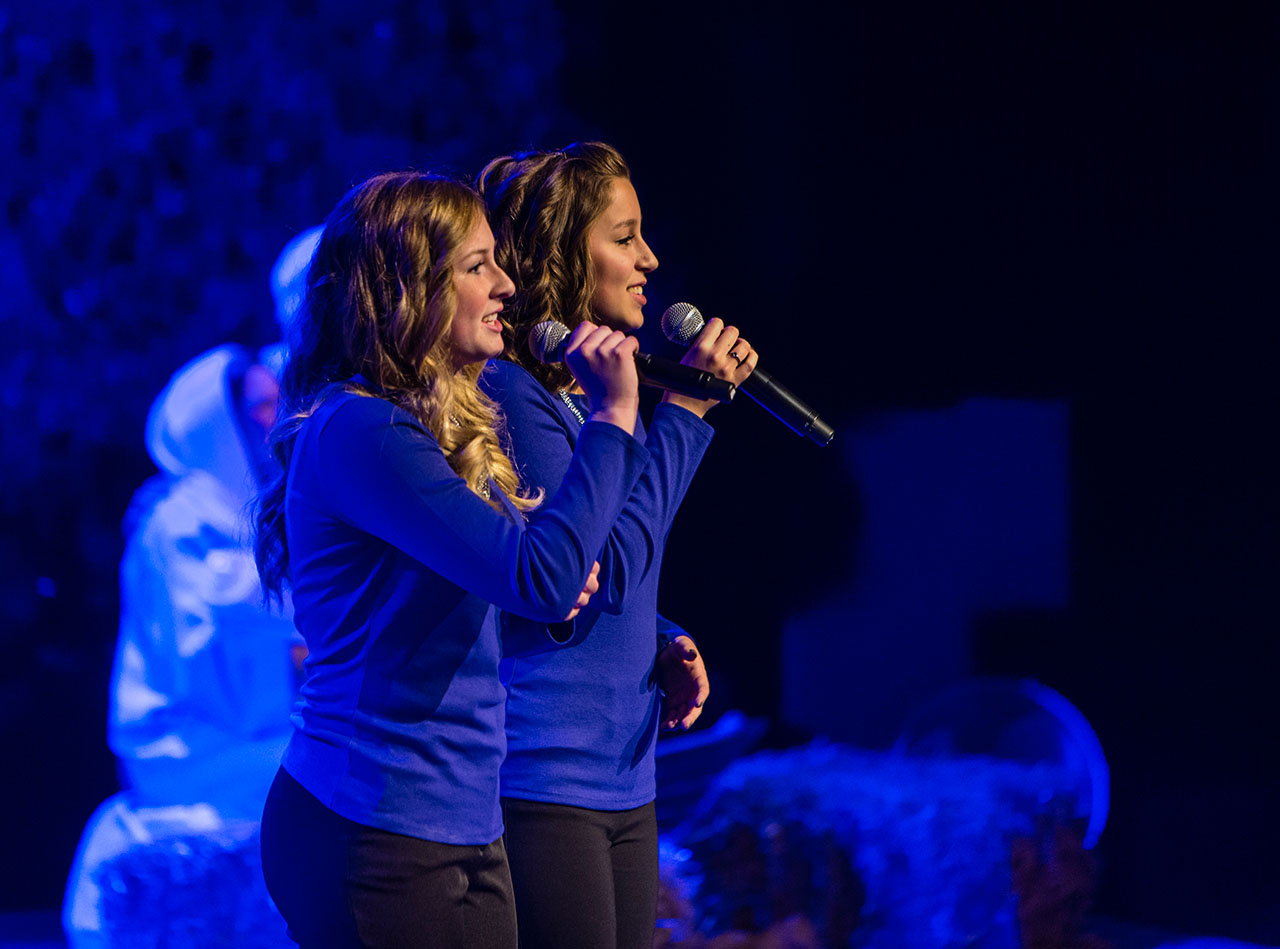
Another of my favourites.
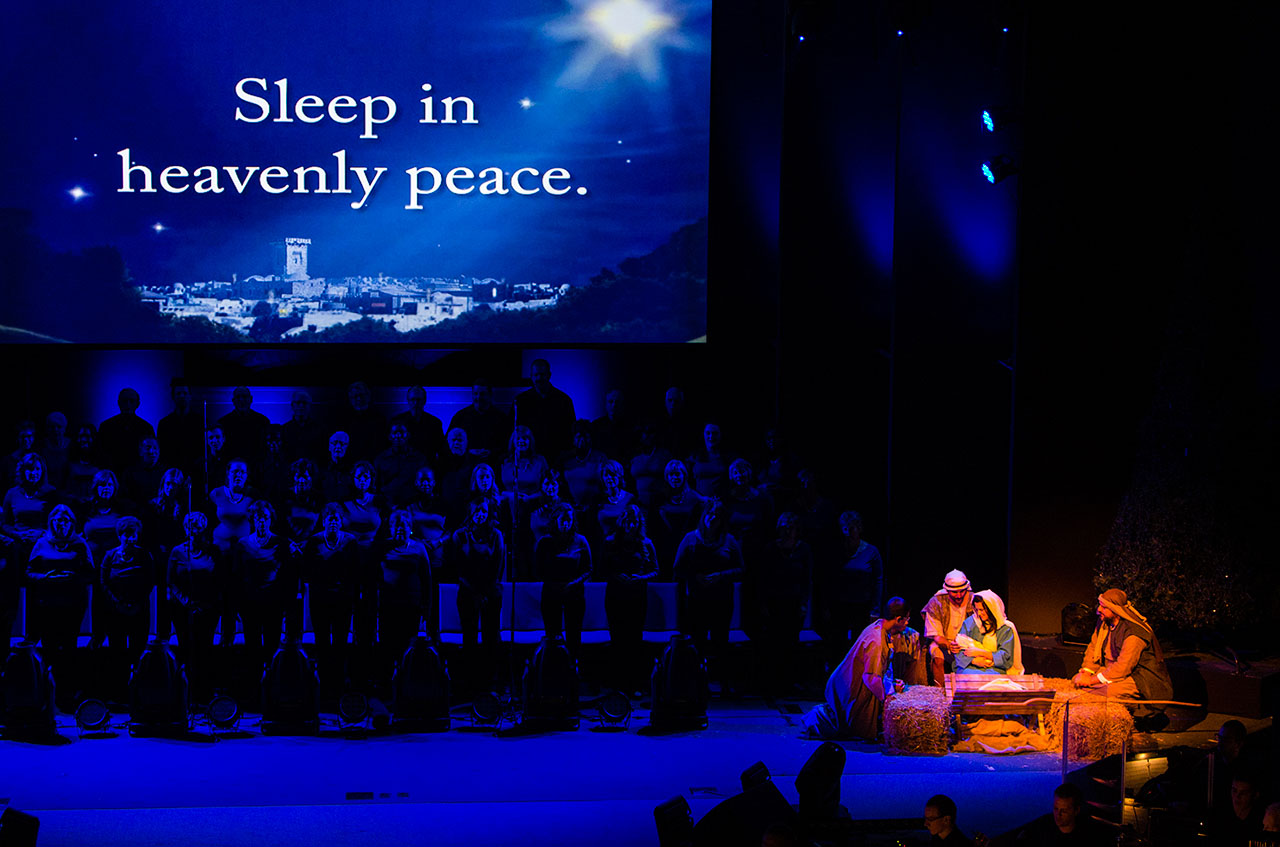
Melody meeting Harvey, one of the shepherds who took her to the manger.
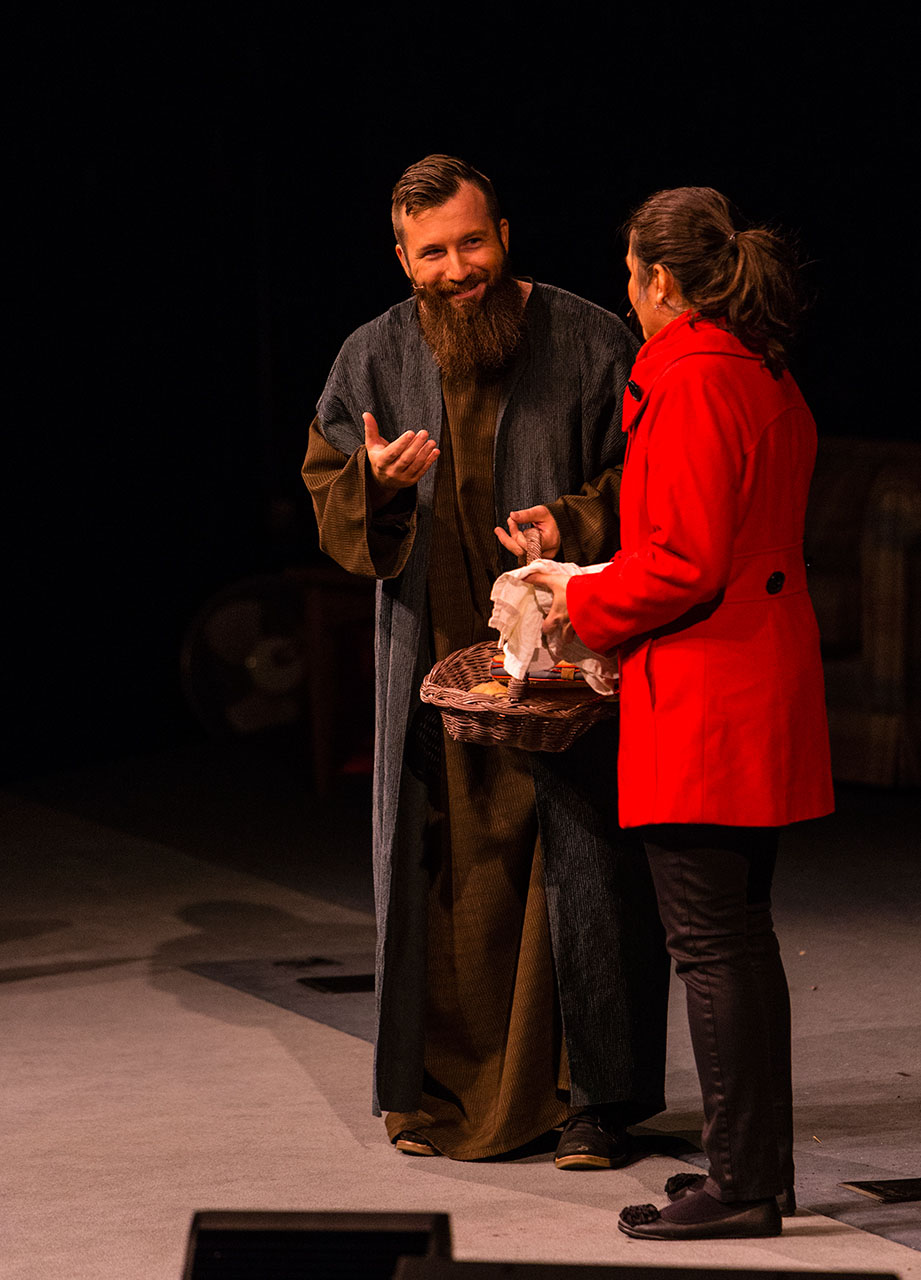
.
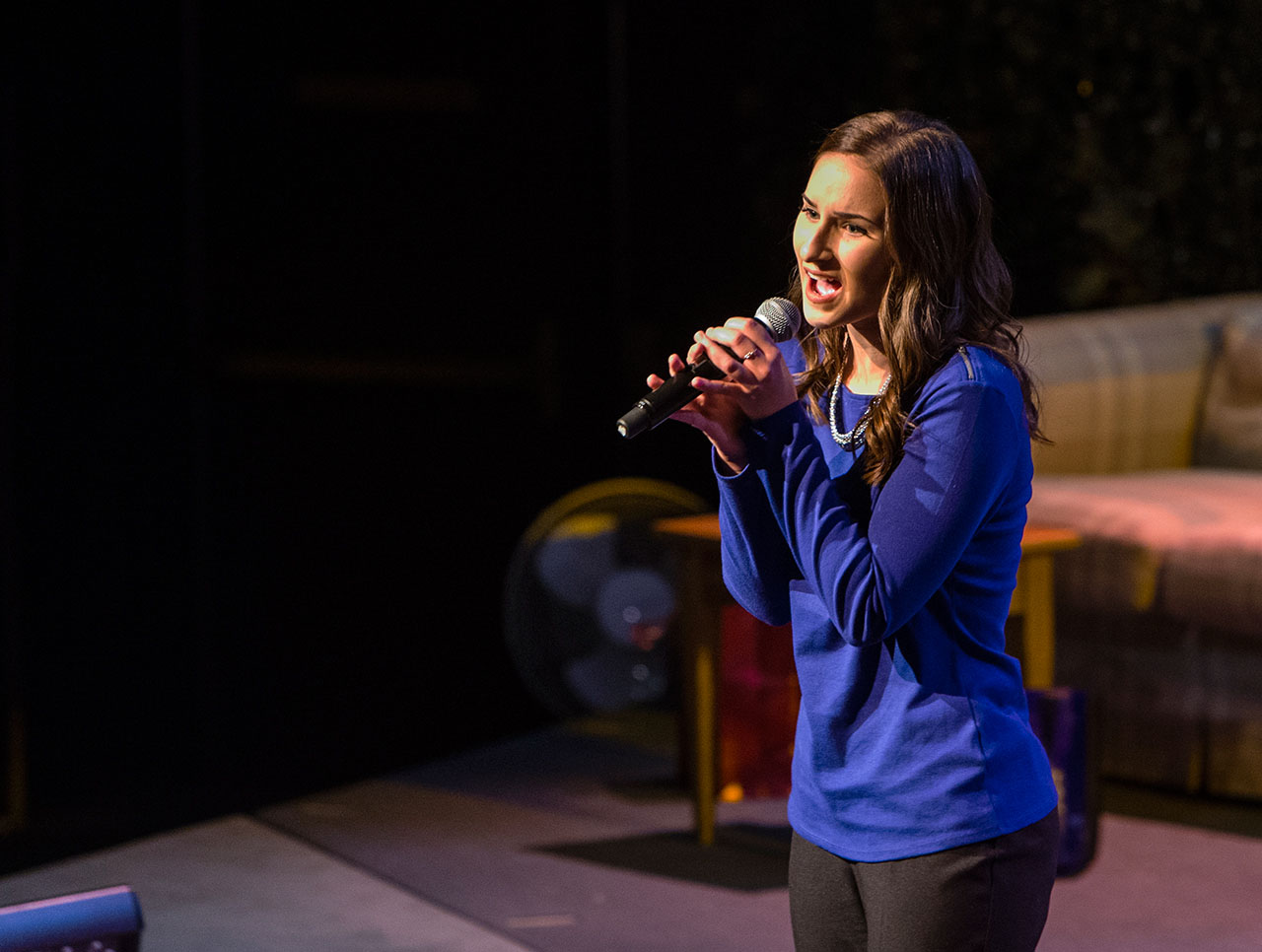
.
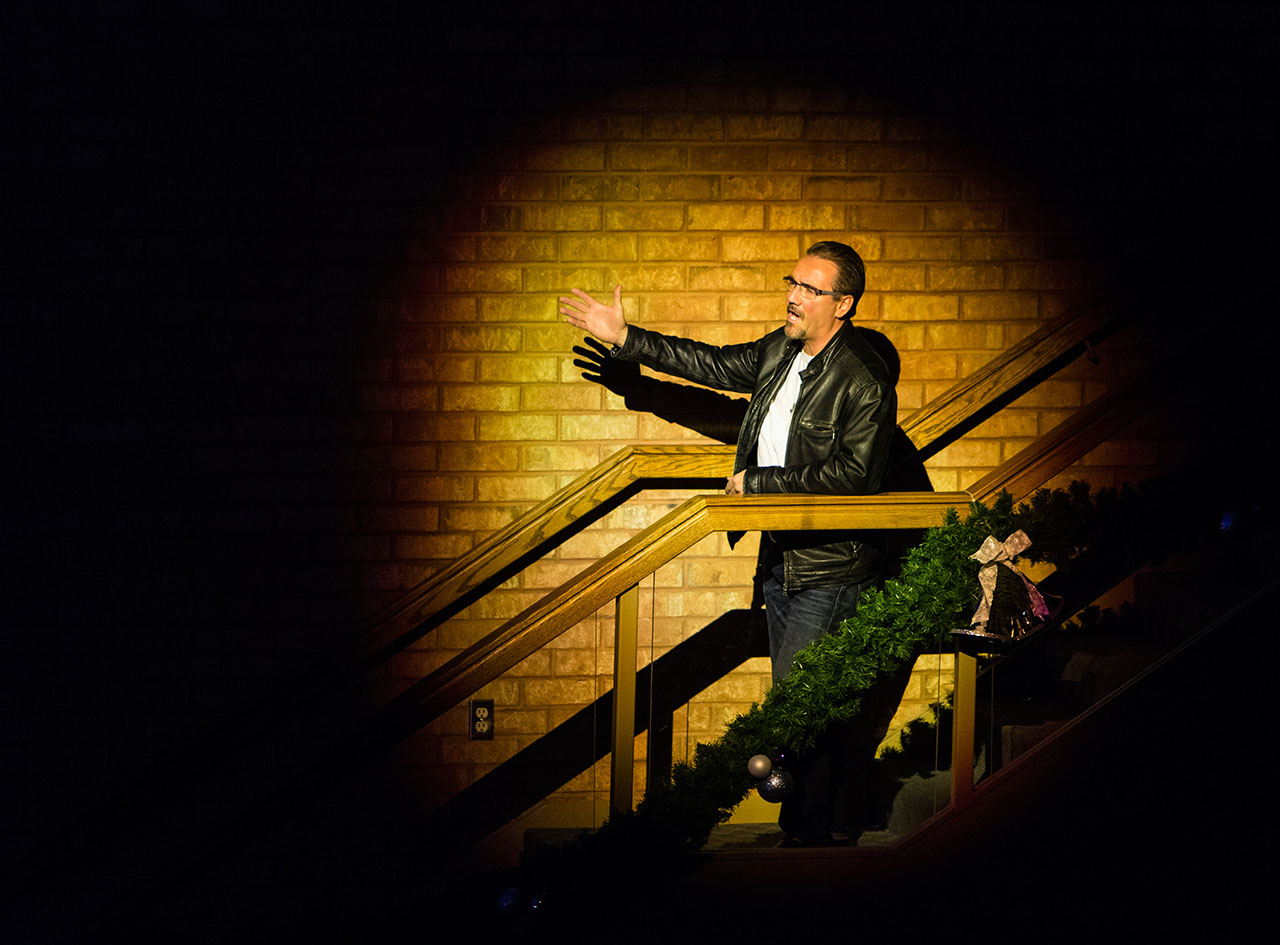
.
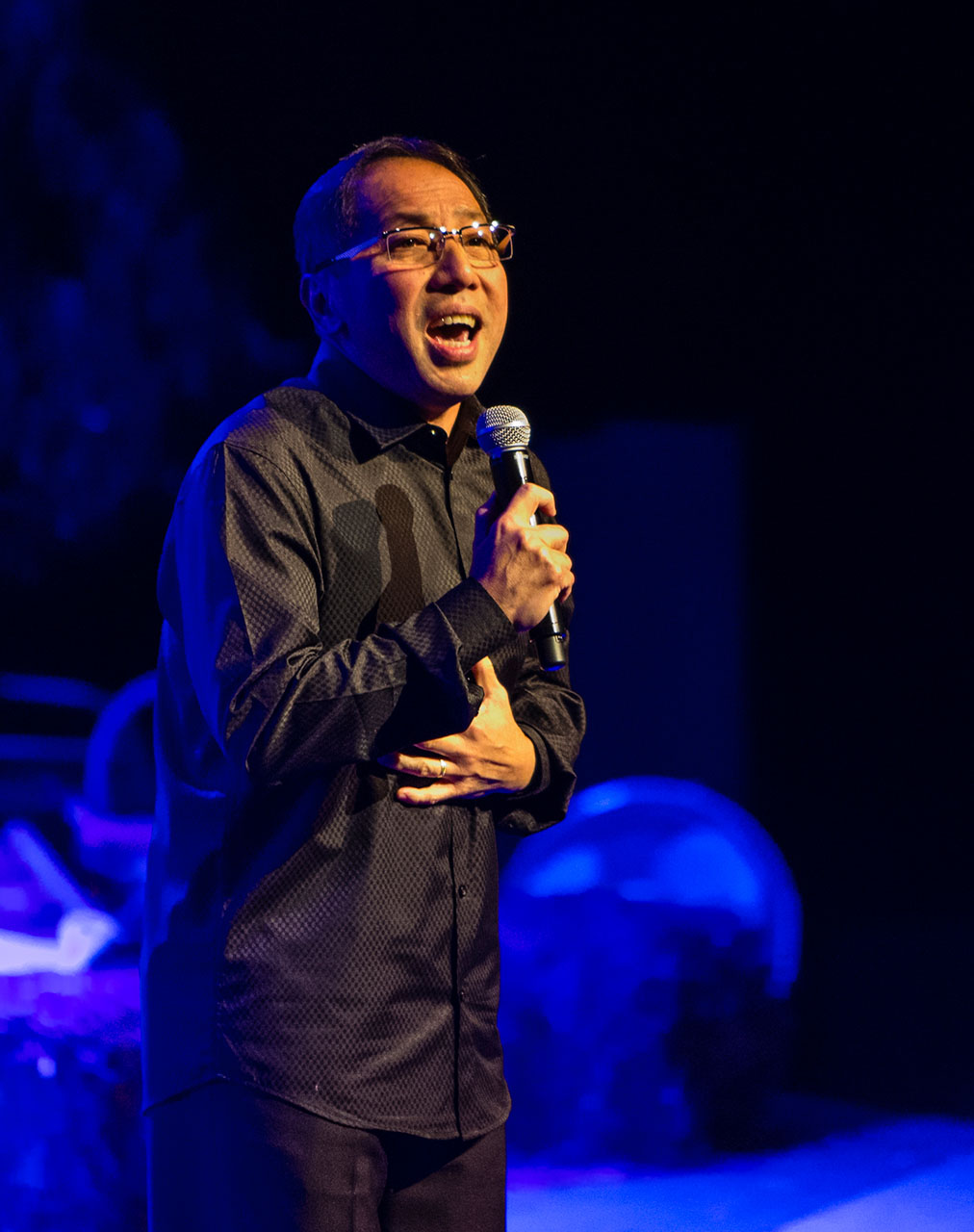
Melody returns to her family a changed person after having met Jesus, her Saviour.
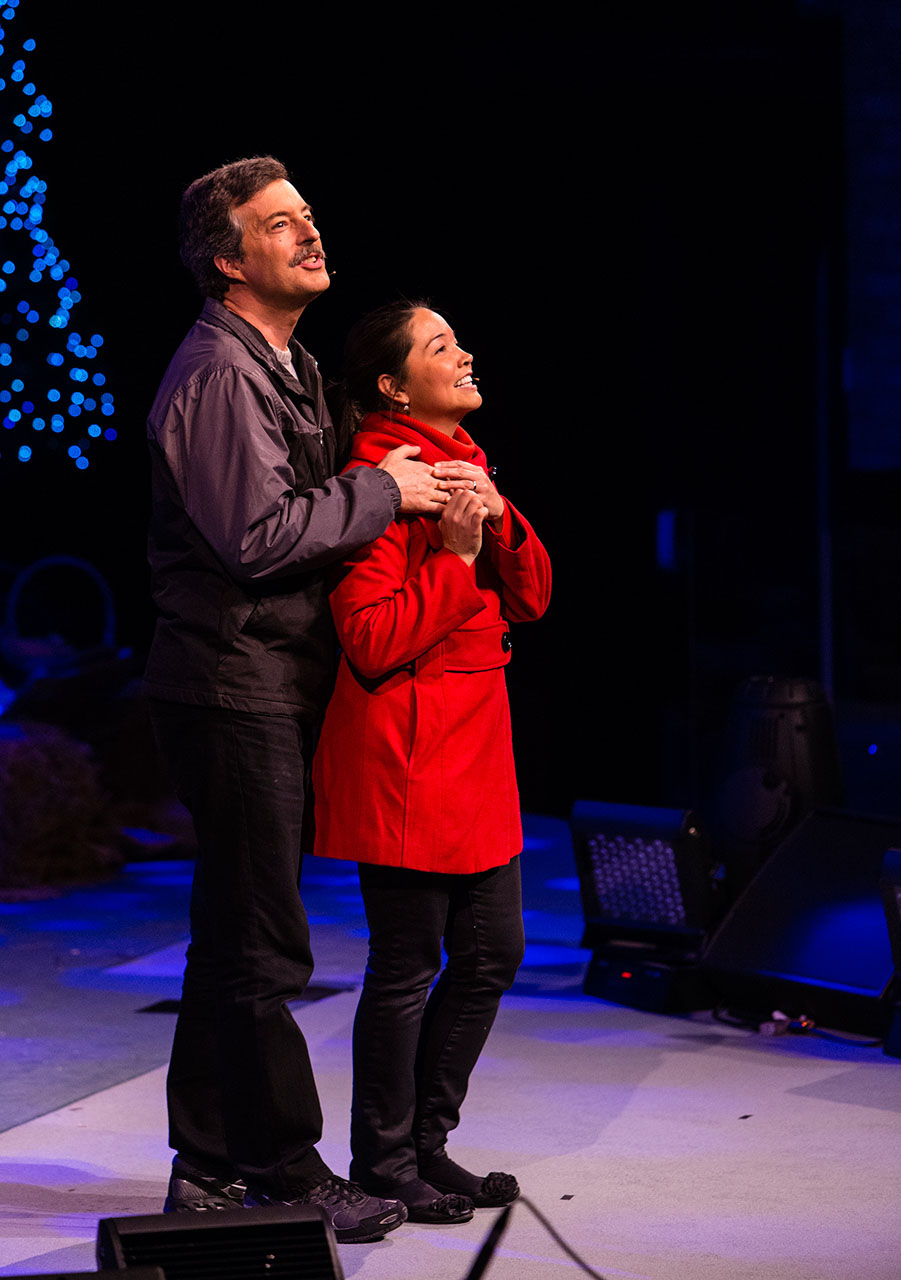
The closing solo of the musical was Let There Be Light, a powerful vocal and visual presentation of Christmas, celebrating the birth of Christ, the Light of The World.
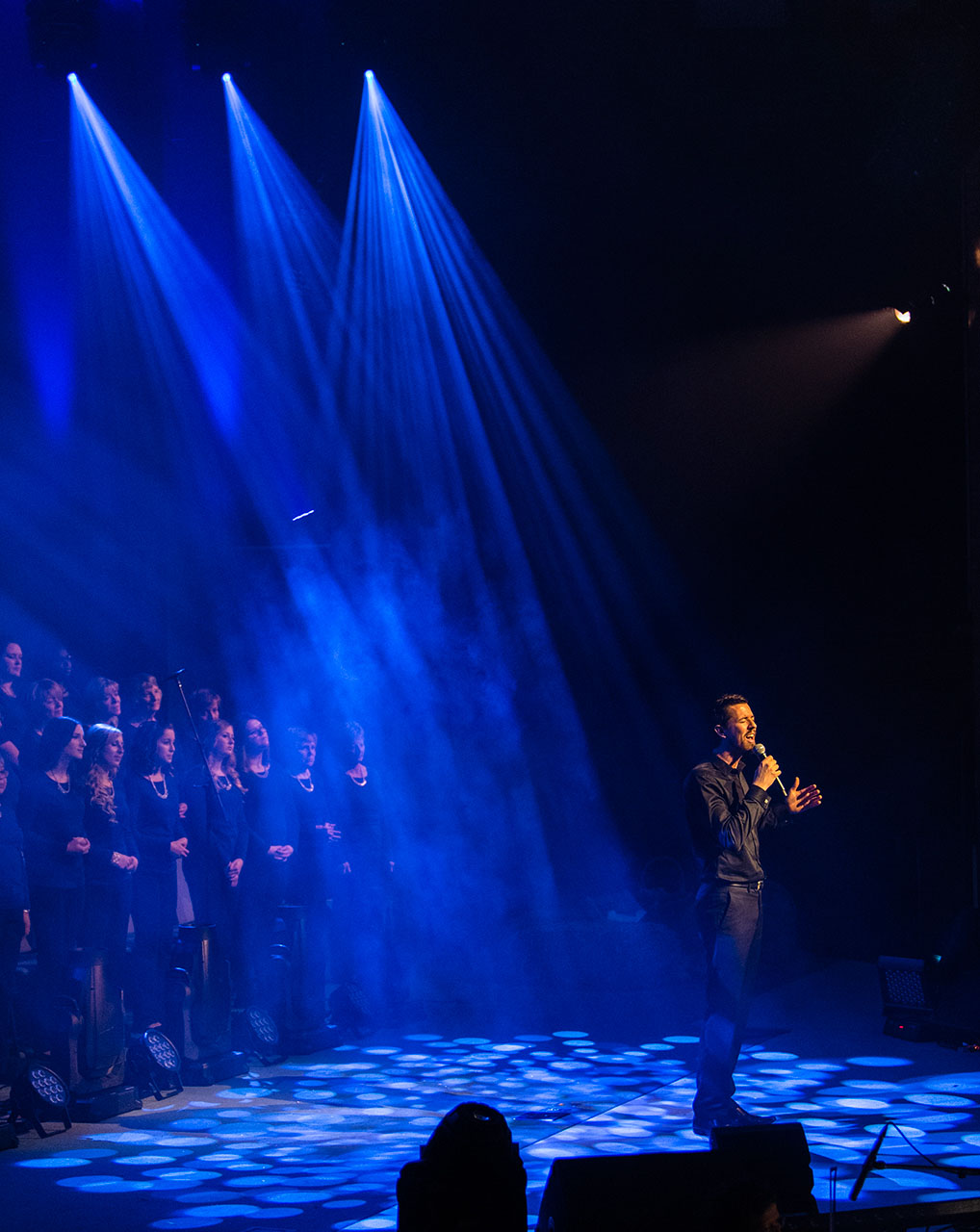
.
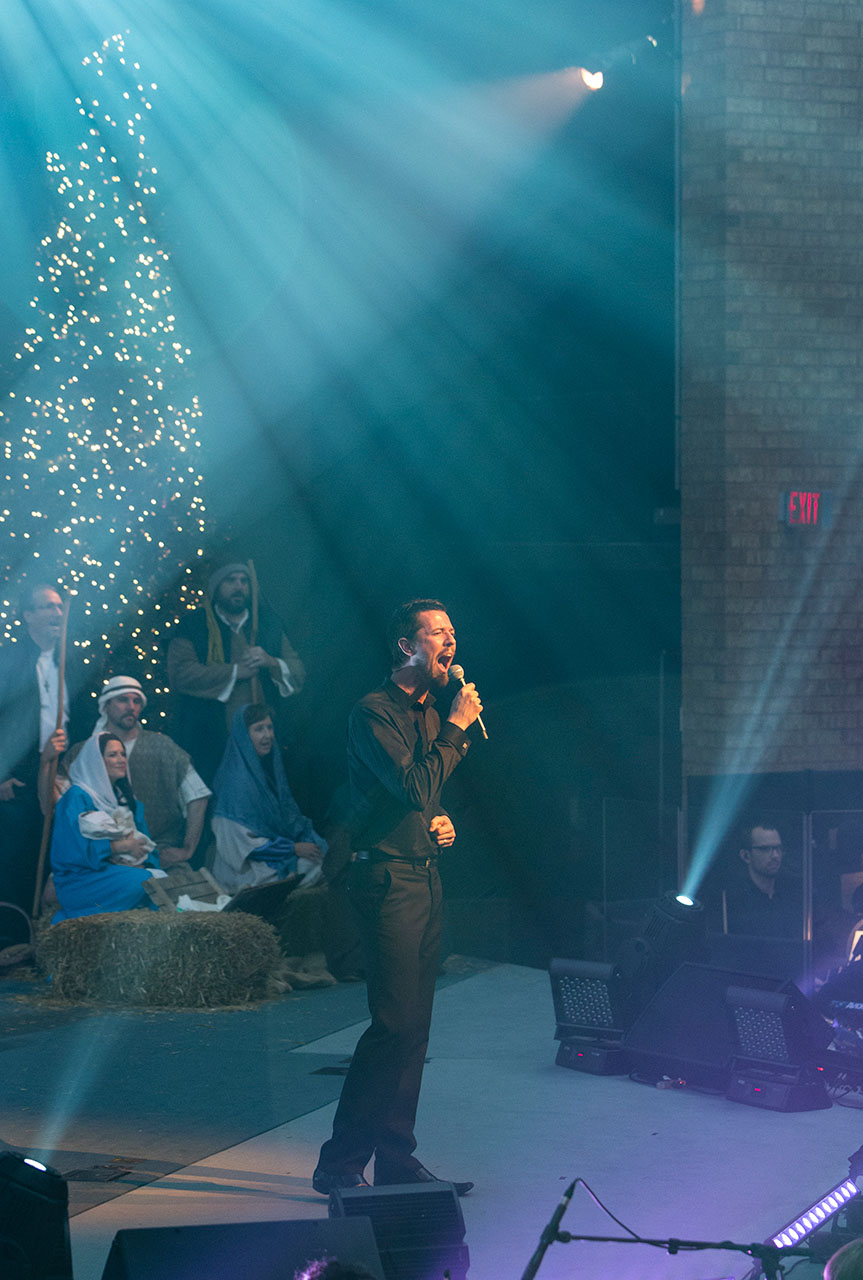
.
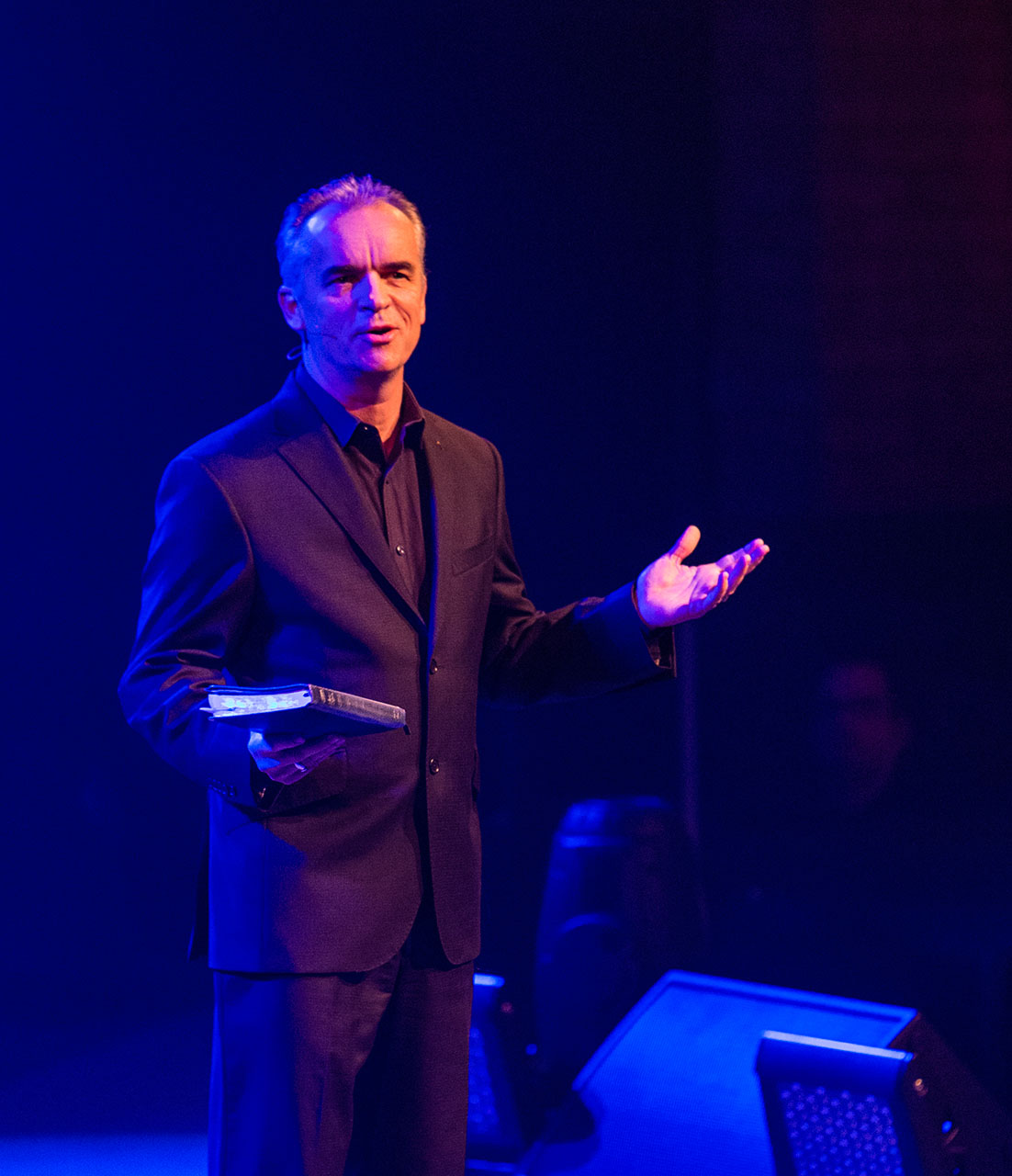
.
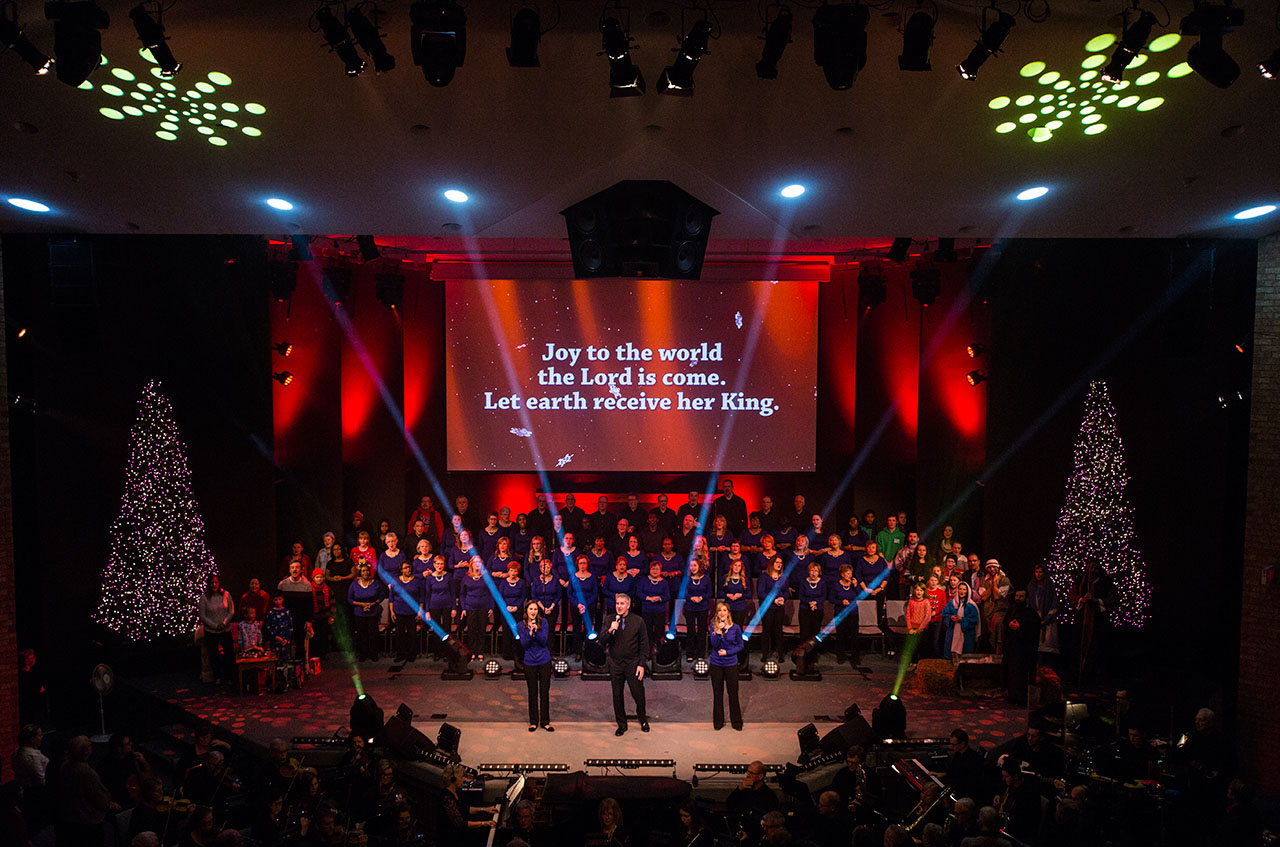
I trust you have enjoyed this post and learned enough to give event photography a try….shoot RAW, take your fastest lenses, shoot wide open, turn up the ISO and get to a shutter speed that stops the motion on the stage and in the camera. Then have fun and try to capture the significant moments that help preserve people’s memory of the event.
You can view many more images from Under A Starry Sky by clicking this link to the CBC – Christmas 2015 Gallery on the web site. If you wish to order a DVD of Under A Starry Sky, click on this link to Calvary Baptist Church and request one via the contact form.
Every year the Martin family Christmas season begins with Calvary’s Christmas presentation which is always a powerful presentation of why we celebrate Christmas, the birth of Christ our Saviour, over two thousand years ago. As the words of the Christmas carol pictured above so clearly say “Joy to the world, The Lord has come. Let earth receive her King”. Thank you to everyone who has followed this blog for another year. Your encouragement and support is much appreciated; we wish you a Merry and Blessed Christmas and look forward to an exciting New Year.

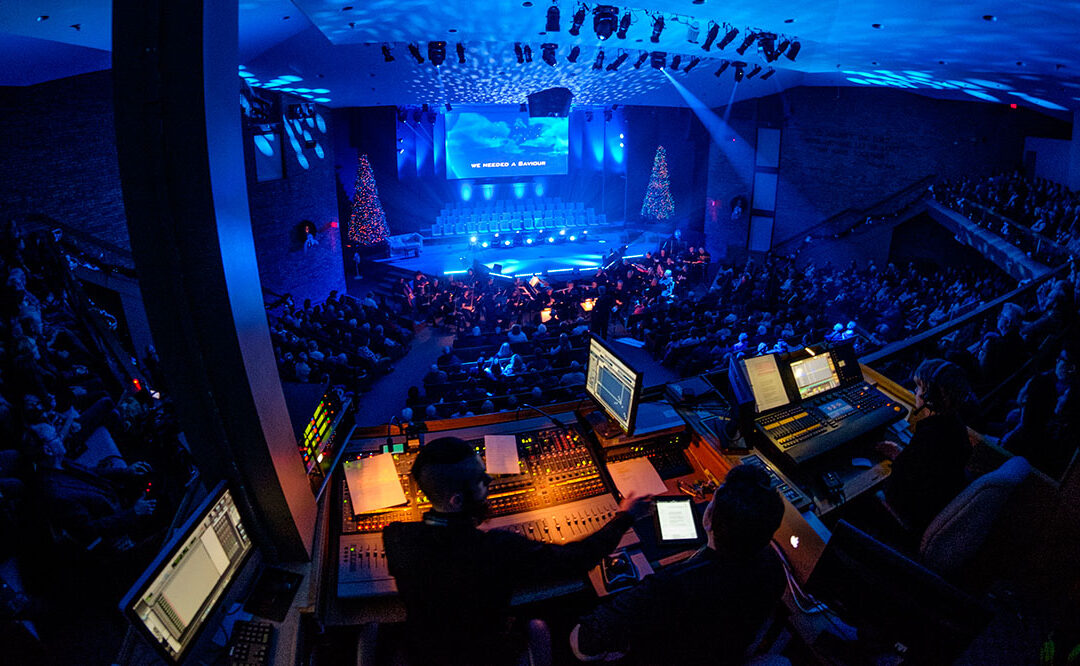
Excellent pictures and discussion Scott. Having watched the production I can appreciate the constantly changing conditions you had to cope with.
Thanks Dad…it was challenging but fun!
Absolutely fantastic, Scott!
Thanks Bev.
Great shots and great explanations, Scott. I enjoy doing event photography myself as it is a bit more of a challenge…and it’s generally not something you can do with a cellphone. 🙂
Thanks Darren…..but the cell phone pics show up faster on the social media sites 🙂